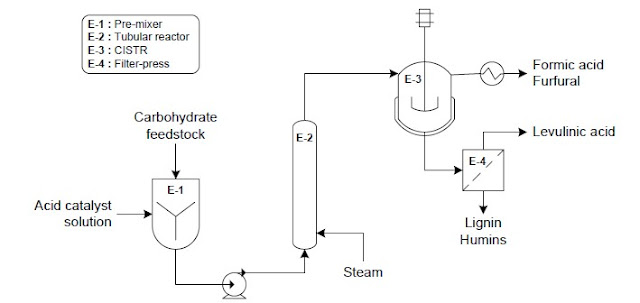NREL pilot facility shows the potential to co-process biomass-derived streams with petroleum
It is expected that the production
of advanced liquid hydrocarbon biofuels grows significantly in the next few
years, generating new commercialization opportunities for both the biofuels
industry and the conventional refining sector. In this scenario, leveraging
existing infrastructure to reduce costs will be a key step. On the one hand,
biofuel intermediates producers can take advantage of existing facilities in
order to reduce investment costs. On the other hand, refiners dispose of the
appropriate instruments for upgrading biointermediates. So, important synergies
are envisaged in this field.
However, there are numerous technical
challenges associated with refinery integration. Recent news coming from USA raise
efforts to overcome some of these challenges. The US DOE National
Renewable Energy Laboratory (NREL), in collaboration with W.R. Grace (petroleum refining technologies
supplier) and Zeton (pilot plant designer and builder), has built
a pilot-scale facility to demonstrate the potential to co-process
biomass-derived streams with petroleum in existing refinery infrastructure (see
press release). The pilot system, constructed in
part with funding from the Bioenergy Technologies Office, combines biomass pyrolysis
together with fluid catalytic cracking (FCC), one of the most important
conversion processes used in petroleum refineries.
This pilot plant has been
constructed in the Vapor Phase Upgrading Laboratory of the NREL and enables a
range of experimental conditions for continued catalyst evaluation. Earlier
this year, coprocessing verification experiments with biomass-derived vapor and
petroleum demonstrated that biomass components were integrated into the liquid
gasoline product. Data generated from these tests will be available to inform
future refinery integrations. The pilot equipment will also be made available
for private companies to test related materials and processes.
Figure 1. Vapor Phase Upgrading
Laboratory of the NREL (extracted from the web page of the NREL)
Let us delve further into the processes
involved.
First step: Pyrolysis
In the pyrolysis process, biomass (feed
rate: 1–3 kg/h) is rapidly heated to 400ºC–600°C in the absence of oxygen. An
entrained flow reactor is used to generate the pyrolysis vapors with typical residence
times from 0.5 to 2.5 seconds. A continuous cyclonic solids removal system
collects residual biomass char and ash. The resulting vapors could be directly
cooled to obtain bio-oil. However, this liquid product is acidic, chemically
unstable and contains more oxygenated compounds than petroleum crude oils. So, in
the next step, another reactor stabilizes the liquid and minimizes downstream
processing challenges.
Second step: FCC
This step takes place in a separate reactor unit
called the Davison Circulating Riser Reactor (DCR), designed by W.R. Grace. The
vapors produced in the biomass pyrolyzer are then fed to the DCR where they
undergo fluid catalytic cracking to yield a highly deoxygenated oil consisting
mainly of hydrocarbons. The DCR (500°C–650˚C, 20–45 psig, 1–10 seconds
residence time) circulates a 2 kg charge of catalyst through a steam stripper
and a regenerator, that allows up to 10 to 12 hours of continuous operation per
day. The product can then be further finished into a conventional fuel
blendstock at a petroleum refinery, where existing infrastructure can be
leveraged to reduce the overall cost of upgrading.





